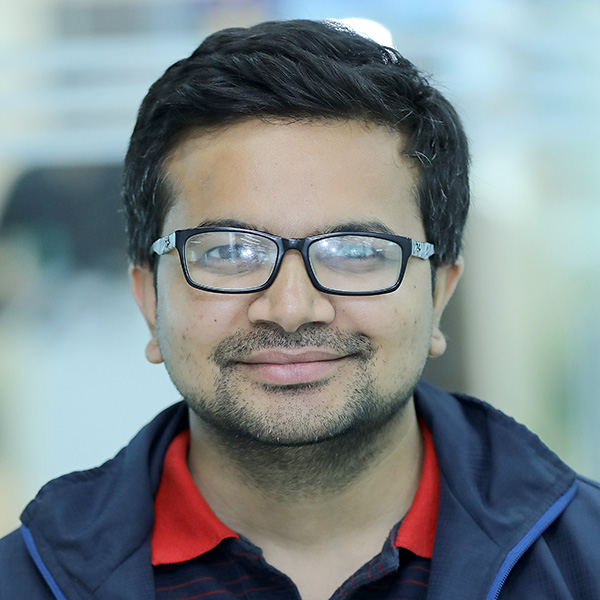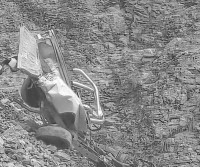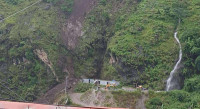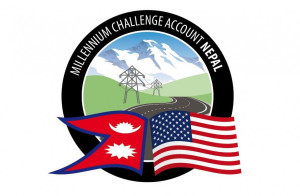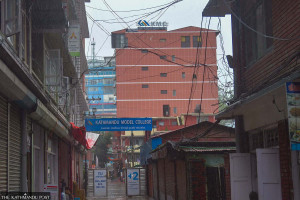National
Exemplary public schools
Amid private sector’s domination, some government-funded schools have proved they are equally good.
Binod Ghimire
In 2015, the private sector operated around 19 percent of the 35,674 schools across the country. Their student share was also in the same ratio.
Nine years later, in 2024, the share of private-owned schools jumped to 23 percent, and their students’ share soared over 30 percent.
While the number of public-funded schools has gone down by around 1,900, over 2,000 private schools have been added in the period. Furthermore, a majority of public schools are struggling to survive.
As per the economic survey report for the 2024-25 fiscal year, 57 percent of such schools have less than 100 students due to a sharp fall in enrolment.
This speaks volumes about the changing priorities of the parents and how private schools are supplanting public schools.
There is a valid reason why parents are rapidly shifting their wards to private schools: quality. Several reports by the Education Review Office under the Ministry of Education show that students from private schools outperform their public school counterparts.
Similarly, the average performance of the examinees from private schools is far better than that of those from the government-funded schools in the Secondary Education Examination.
As a result, the country is witnessing a spike in the volume of private schools and their enrollment while the public schools are shrinking.
However, this is not the end of the story. While pessimism dominates the country’s public school sector, there are some government-funded schools that leave behind most private competitors not just in education but also in extra-curricular activities.
They perform excellently on the national board examinations, their students get selected to study medicine and engineering on scholarship through competitive entrance tests, and they dominate sports and literary competitions.
As a result, during enrolment season in April-May, they are flooded with aspirants to secure their seats in these schools every year. Like well-established private schools, they also conduct screening tests because they don't have enough seats to enroll all the applicants.
Kalika Manavgyan School in Butwal is one such school which presents testimony that even public schools can excel in every aspect of quality education. With around 8,000 students, it has received the best public school award from the federal government five times in the last decade.
Excellent results in national board examinations, the volume of student enrolment and outstanding performances in various extracurricular activities place the school among the best schools. In addition, it is famed for producing dozens of recipients of MBBS and engineering scholarships every year.
What makes Kalika an excellent performer? “A dedicated team of teachers and an ever-supportive school management committee,” says Dinesh Thapa, principal at the school. “We don’t just focus on imparting knowledge but on holistic development of our children. ”
Along with an excellent teaching-learning environment, the school has a separate sports club, music club, literacy club and science club to provide students with opportunities to grow in the fields. It also provides free hostel facilities for orphaned and underprivileged students.
“Every year, we set higher targets and put our efforts together to attain them,” said Thapa.
Gyanodaya Secondary School in Bafal, Kathmandu, is another government-funded school that has claimed its position among the country's best schools. In Nepal, public schools are perceived generally as the schools of the poor. Even the children of public school teachers study in private schools. However, Gyanodaya can be credited with doing its bit to reverse the trend.
As it continued to excel in imparting quality education, even the top government officials started enrolling their children there. A significant number of Gyanodaya’s students once studied in private schools.
It’s not true that the better performing public schools are available only in the federal capital or big cities like Butwal and Pokhara. As per the economic survey report, 0.4 percent—around 120—public schools remain a good choice for students as they still have a minimum of 2,000 enrolment.
Padmodaya Secondary School, Dang and Jananamuna Secondary School, Surkhet, are some government-funded education providers from the small towns that have outperformed their private competitors.
When Yam Shrestha took charge of the Surkhet-based school in 2013 as head master, it had hardly 500 students, most from outside the town. A non-parent was leading the management committee, the school was a political playground, and even the teachers had sent their wards to private schools.
“I completely banned political activities within the school premises, worked to have a parent as a management chair and convinced all the teachers to bring their children back from private schools,” says Shrestha.
“Together with other colleagues, I worked to better the classroom environment, provided additional support to weak-performing students and focused on extracurriculars.” His initiative paid back. The school’s results improved, and its students excelled in sports and other competitions. As a result, student enrolment soared.
Today, it has become a family of 3,100 students, threatening the existence of private schools in the surrounding area. If Shrestha’s claim is anything to go by, the school can easily get 6,000 students, but it lacks infrastructure and financial resources.
Lack of resources is a common complaint of most public school managers, including those who are shining as good performers. Besides the teacher’s salary, the government provides a budget to the schools for infrastructure development as conditional grants.
However, the money they receive for learning materials is very minimal. The numbers of teachers and support staff need to be added in proportion to the student enrolment. However, that is not always possible.
Several of such exemplary schools had been raising the minimum fee for students to meet the expenditure. However, fee collection has become illegal with the enforcement of the Free and Compulsory Education Act. Besides, the Commission for Investigation on the Abuse of Authority warned schools like Jananamuna against raising the fee.
“Quality education is costly. However, neither the government allocates the necessary budget nor can we collect fees. We are really in trouble,” says Shrestha.
Education experts say that while a lack of commitment from teachers is the primary reason why most public schools are faring poorly, a lack of adequate budget is another prominent reason.
“Some public schools have demonstrated that they can be transformed if there is willpower. If they can excel, others can, too,” says Binaya Kusiyait, a professor with several education-related researches to his credit.
“Alongside the deep dedication of the teachers and school management committee and no politicisation, an adequate budget is equally necessary to deliver quality education.”
His 2022 research showed that Rs197.84 billion is needed annually to meet all the expenses for realising the free and compulsory quality education enshrined in the constitution.
According to his report, the per-student cost needs to be increased to Rs32,400 annually, up from Rs9,839 in 2018.
The Ministry of Education also came up with a similar report earlier this year suggesting that the government needs to more than double the existing education budget to ensure the children's constitutional rights for compulsory and free education.
It says an additional Rs222.91 billion will be necessary to bring all children into the school system and provide them with free and compulsory education. The total education budget for the current fiscal year stands at Rs203.66 billion.
“Our focus is divided: providing quality education and finding money to meet the additional expenses. If the government makes the necessary budget available, we can solely focus on education,” said Shrestha.




 28.26°C Kathmandu
28.26°C Kathmandu

